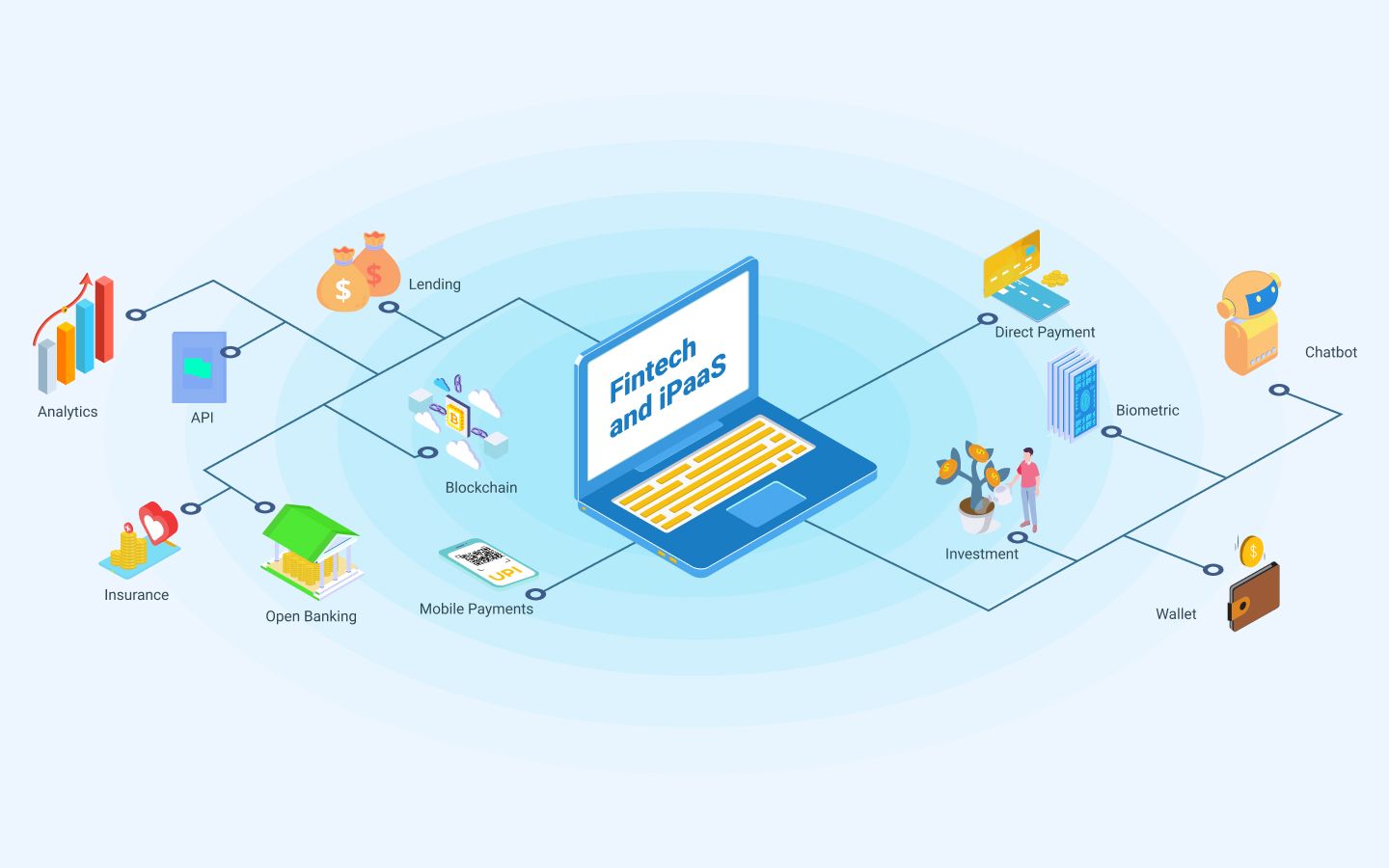Financial technology, iPaaS and the "FUTURE"
The FinTech industry has been booming with technological advancements revolutionizing the user experience for both customers and businesses. FinTech has been disrupting the market with new applications and innovations to a point where individuals are using a bunch of financial applications to manage their finances. You have AI technology providing advice on managing finances, applications that directly give you insights on your investments and breaks down finance for the common man.
One of the major reasons that the FinTech industry has been doing this well, is the slow rate of technological development in banks and financial institutes (FI’s). With banks and FI’s, their dependence on legacy systems is one of the major reasons for this slow growth.
Related: Why and how to integrate legacy systems with iPaaS
However banks and financial institutes no longer need to look at the FinTech industry as competition. With the help of integration banks and financial institutes can work hand in hand to provide better financial services.
What is iPaaS?
iPaaS stands for integration platform as a service, which is basically a cloud based tool for automation of applications. In simple terms when we talk about iPaaS and banking, we are referring to using integration as a platform to connect banks and financial institutes with the newest applications and innovations taking place in the finance industry. A platform like Quickwork can help set this up quickly, and this can even work as a hybrid solution as it is possible to connect your legacy systems to interact with FinTech APIs.
Related: Integration platform as a service (iPaaS): What is it, the benefits and how to choose the best one
What are the benefits of iPaaS to banks & financial institutions
Coming back to the main point, why should you as a bank or financial institute look into integrating with FinTech applications, what’s in it for you?
- Improved customer service: There are more applications than we can account for, and new ones being released as you read this piece itself. The average customer is spoiled for choice and they use multiple financial applications to get what they want. Instead of looking at these applications as competition you can see them as supplements to what you’re offering. By creating seamless data transfer between your systems and these applications you are retaining your customer, since they now have a bank that is flexible and understanding to its customers needs. Your customers will be happy since you’re helping them create a connected system to manage their finances.
- Adapting to customer demands: Customer demands and needs are constantly changing, to keep up with the pace of their demands, new products and services need to be launched and they need to be launched quickly. As a bank, creating micro applications that cater to a service is quicker than updating your central systems each time you need to launch or test out something new. This not only allows you to launch and test things individually, but the decentralised approach also ensures that things can be looked at singularly when it’s time to update. With the help of integration you can connect your applications together by building APIs.
- Increase efficiency: You’re not just going to be using integration on an external level to reach out to your customers. Integration can also help you expedite your internal workflow, you can use integration to help streamline the tasks of your employees, and work quicker, automation can take care of the busywork that is done manually allowing your employees to work faster and in a more productive manner.
- Leverage the applications:As a bank/institute you already have a large reserve of customers in your base, retain them by innovating your offerings to reach out to them in more engaging ways. Leverage the use of messenger applications and social media platforms to provide your services, create personalized templates, and use external applications to support your own technology and services. Use FinTech as a building block to innovate in the field of finance, and focus on creating applications and services that enhance user experience.

With integration platforms, banks can focus on streamlining internal operations and on expanding product offerings to their external customer base. Integration allows you to create, combine and explore. You can check out our Quickwork Automation Platform firsthand to see how this platform can benefit you, and get in touch with us for more information about integration and the benefits an automated approach can have on you as a bank or financial institute.









